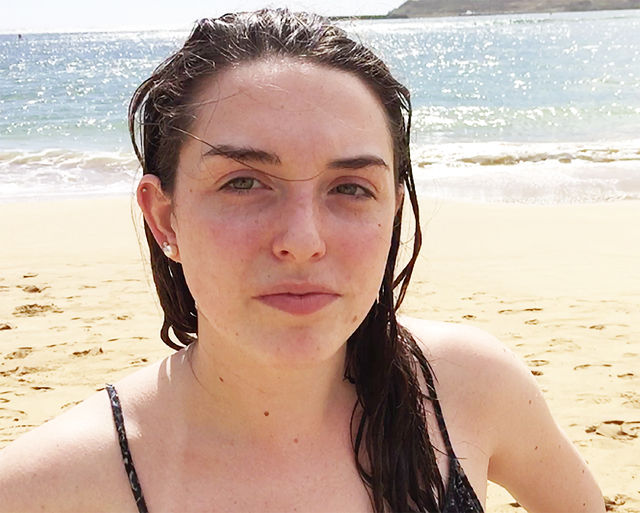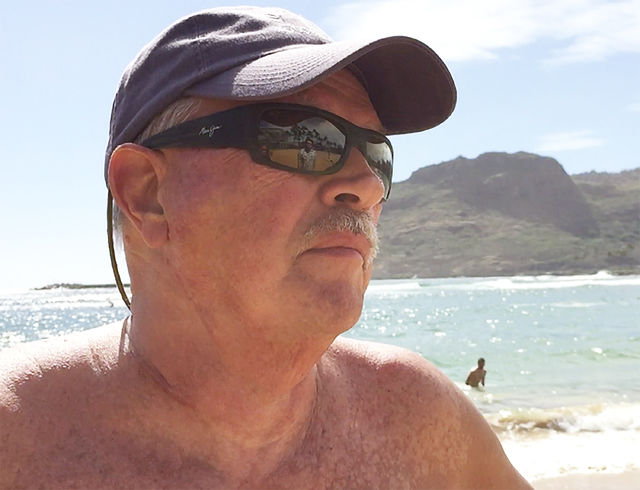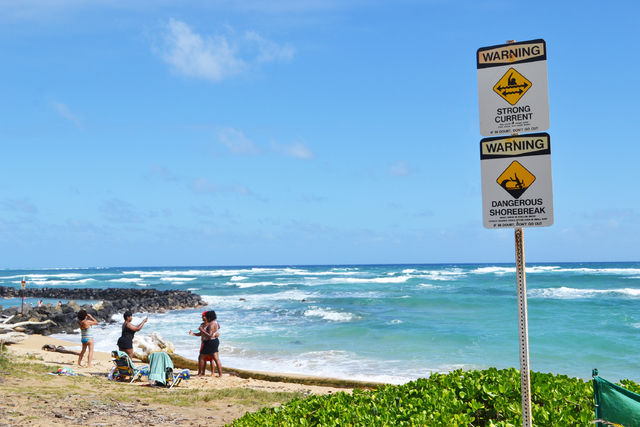LYDGATE — Ed Howard, a visitor from Fort Worth, Texas, takes responsibility for his own safety at the beach.
“You’re kinda on your own, figure it out yourself,” the recent retiree said. “I mean it would be nice if somebody provided the information but I don’t see a responsibility there (for the state and county) to do so. It would be nice if there would be a lifeguard at those beaches and there really aren’t at most beaches.”
Since Nov. 2, there have been three drownings on Kauai, two of which were visitors.
So far this year, there have been 13 reported drownings involving 11 tourists and two residents.
Hotels and airports have been sources for information regarding ocean safety, according to Mainland visitors who were at Kalapaki Beach and Lydgate Park last week.
Seattle visitors Ian Heans and Shannon Stacy told The Garden Island they were briefed about ocean safety on a video at the airport, but were surprised to hear about the increased number of incidents.
“I heard about one drowning, but usually safety is all general (common sense) for (Kalapaki Beach) and for this island,” Heans said. “I grew up in Peru so there were no lifeguards or anything there, so that’s where I’m from; I had to learn for myself. But here, no, not really. We’ve been to some pretty popular beaches with lifeguards, haven’t really been that adventurous. We saw (ocean safety) videos at the airport. Then we picked up a couple brochures about the touristy areas and one was about safety. But that’s about it.”
While growing up in South America, Heans explained that it was up to him to determine his limitations and to be careful when swimming in the ocean.
“It’s common sense, really,” Heans said. “We don’t go out there if we don’t have a board or some sort of device. Obviously, we pay attention if there’s a lifeguard or not, that’s always part of the equation. … It’s pretty simple. Common sense: It’s the greatest tool.”
Stacy had heard about the drownings. Like Heans, she understands the importance of being aware of your surroundings and understanding the consequences of your actions.
“I pretty much just always am with someone, so I don’t go out by myself,” she said. “I also don’t really go out too far in the ocean. I’m not that great of a swimmer, so I just stay where I can touch my feet. I do know the tide can pull you out and you just kinda have to look at the water. Also, if there’s nobody swimming in the area then I just try not to swim but I don’t go out for very long. I try to be careful but I know that it’s always a possibility. We went scuba diving but we went with an experienced diver so it was pretty safe.”
Having lifeguards around does provide a sense of security for Stacy, but she acknowledges that at the end of the day, it’s up to the individual.
As for the amount of ocean-safety information she has received, Stacy said “I think it’s alright … but I guess more is always better because you don’t want people to drown. I guess more lifeguards is always nice, but we are tourists, and it’s kind of our job to do our research, too.”
Unlike Heans and Stacy, Howard did not recall receiving any ocean-safety information while travelling to Kauai.
“Obviously there’s signs out here about the riptides and the shore break,” Howard said. “But what’s good for me is that you kinda know what’s going on, but no, nobody said anything to us at the airport or on the plane.”
Howard likes having the safety net of a lifeguard’s presence while he’s in the ocean, but that hasn’t stopped him from going to unguarded beaches.
But other visitors aren’t as gung-ho about visiting those beaches, especially Sandra Lankenau from upstate New York.
Explaining that she is not the swimmer she used to be, Lankenau tends to stay away from beaches with dangerous high tides and shore breaks, preferring the likes of Lydgate Beach Park’s Morgan’s Ponds instead.
“I love this saltwater pond; it’s perfect,” Lankenau said. “I don’t go in the water (at unsupervised beaches) other than at the hotel that we’re staying at, the Kauai Shores, and they have a warning sign that there’s no lifeguard and that it can be dangerous.”
Lankenau said she has received an abundance of information from her hotel regarding ocean-safety procedures and warnings.
“It’s in all the written material,” Lankenau said. “We get all the handouts that you get at the hotel and airport, so I feel they’re warning sufficiently.”
Kauai Lifeguard Association President Dr. Monty Downs urges the public to take the necessary precautions before going into the water, particularly in areas that are unsupervised.
“Our No. 1 recommendation — unfortunately, we realize is unlikely to be followed — is to swim at lifeguarded beaches,” Downs told The Garden Island earlier this month. “That will guarantee that you won’t drown. … When you’re swimming at remote, unguarded beaches, you’re taking a chance. If you decide to take that chance, you need to make sure to take a few moments to educate yourself about it. Ask the concierge about the conditions about that day, and talk to any local people about any hazards and conditions that day.”
Knowing one’s limitations as a swimmer is crucial to staying safe at Kauai’s beaches, whether or not a lifeguard is present. Jennell Hicks, a visitor from Seattle, is well aware of how she can stay safe while enjoying herself at the beach.
“We’ve definitely got warnings about what shores to go on; we’re up in Princeville and they gave us a handout and told us where to go and where not to go,” Hicks said. “They did let us know that a few people drowned this weekend, so I felt that we got a briefing.”
Hicks does go to beaches she was warned to avoid, but says she stays within limitations.
“I go, but I just don’t get in the water,” Hicks said. “I don’t swim at all, so it’s ankle-length for me. Dig the feet in the sand, I’m not gonna go too far and make anyone else have a heart attack, not myself.”






